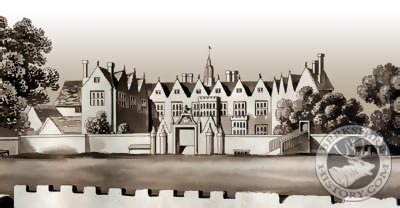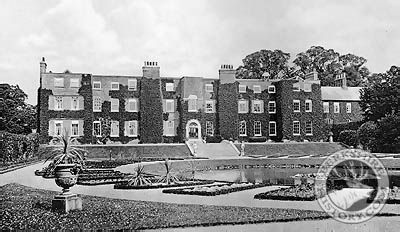
RBH Home
Maps & Travels
Articles
Legends
Towns & Villages
Castles & Houses
Churches
Biographies
Gentry
Family History
Odds & Ends
Mail David
Billingbear Park
Waltham St. Lawrence, Berkshire
 Billingbear was a manor owned by the
Bishops of Winchester and then the Crown, until 1549 when King Edward VI
granted it to Sir Henry Neville, a younger brother of the 5th Lord
Bervagenny. He was unable to take possession until 1567 and instantly set
about building himself a fine red brick Tudor mansion. He was buried in
the church at Waltham
St. Lawrence where there is a large figured monument to his
memory. Sir Henry’s son and
namesake was Ambassador to France, so spent a number of years away
from Billingbear. He was implicated in the plot against Elizabeth I with
the Earl of Essex and imprisoned in the Tower.
Billingbear was a manor owned by the
Bishops of Winchester and then the Crown, until 1549 when King Edward VI
granted it to Sir Henry Neville, a younger brother of the 5th Lord
Bervagenny. He was unable to take possession until 1567 and instantly set
about building himself a fine red brick Tudor mansion. He was buried in
the church at Waltham
St. Lawrence where there is a large figured monument to his
memory. Sir Henry’s son and
namesake was Ambassador to France, so spent a number of years away
from Billingbear. He was implicated in the plot against Elizabeth I with
the Earl of Essex and imprisoned in the Tower.
 During the Civil War, the family had
divided loyalties. Fortunately, the Royalists won through and, after the
Restoration, the house played host to the King, the Duke of York, Prince
Rupert and many other nobles at a great dinner party in 1667. Two years
later, Cosmo, Duke of Tuscany, also visited and one of his party wrote an
extensive account of his two day stay. In the 18th century, the heirs of
the Nevilles were the Lords Braybrooke and Billingbear was their chief
residence until the 3rd Baron
inherited Audely End in Essex.
During the Civil War, the family had
divided loyalties. Fortunately, the Royalists won through and, after the
Restoration, the house played host to the King, the Duke of York, Prince
Rupert and many other nobles at a great dinner party in 1667. Two years
later, Cosmo, Duke of Tuscany, also visited and one of his party wrote an
extensive account of his two day stay. In the 18th century, the heirs of
the Nevilles were the Lords Braybrooke and Billingbear was their chief
residence until the 3rd Baron
inherited Audely End in Essex.
Tragically, Billingbear Park suffered a devastating fire in 1924 and the surviving shell of the house was ruthlessly torn down soon afterward. Only a few architectural featured survived when they were incorporated into the newly restored Old Bulmersh Court the following year.
Billingbear Park no longer
stands.
